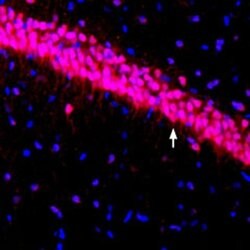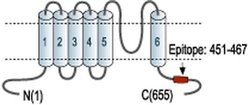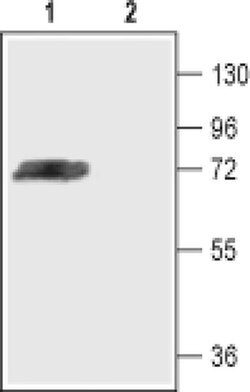Promotional price valid on web orders only. Your contract pricing may differ. Interested in signing up for a dedicated account number?
Learn More
Learn More
KV4.3 (KCND3) Polyclonal Antibody, Invitrogen™
Rabbit Polyclonal Antibody
Supplier: Thermo Scientific PA577583
Description
Product is shipped at room temperature as a lyophilized powder and should be stored at -20C upon receipt. Reconstitute using 50 uL deionized water.
Voltage-gated potassium (Kv) channels represent the most complex class of voltage-gated ion channels from both functional and structural standpoints. Their diverse functions include regulating neurotransmitter release, heart rate, insulin secretion, neuronal excitability, epithelial electrolyte transport, smooth muscle contraction, and cell volume. Four sequence-related potassium channel genes - shaker, shaw, shab, and shal - have been identified in Drosophila, and each has been shown to have human homolog(s). This gene encodes a member of the potassium channel, voltage-gated, shal-related subfamily, members of which form voltage-activated A-type potassium ion channels and are prominent in the repolarization phase of the action potential. This member includes two isoforms with different sizes, which are encoded by alternatively spliced transcript variants of this gene.
Specifications
| KV4.3 (KCND3) | |
| Polyclonal | |
| Unconjugated | |
| KCND3 | |
| Kcnd3 | |
| Rabbit | |
| Antigen affinity chromatography | |
| RUO | |
| 3752, 56543, 65195 | |
| -20°C | |
| Lyophilized |
| Immunocytochemistry, Immunofluorescence, Immunohistochemistry, Immunoprecipitation, Western Blot | |
| 0.8 mg/mL | |
| PBS with 1% BSA and 0.05% sodium azide; pH 7.4 | |
| Q62897, Q9UK17, Q9Z0V1 | |
| Kcnd3 | |
| Peptide (C)NEALELTGTPEEEHMGK, corresponding to amino acid residues 451-468 of human Kv 4.3 | |
| 50 μL | |
| Primary | |
| Human, Mouse, Rat | |
| Antibody | |
| IgG |
Product Content Correction
Your input is important to us. Please complete this form to provide feedback related to the content on this product.
Product Title
Spot an opportunity for improvement?Share a Content Correction


